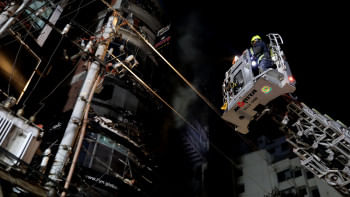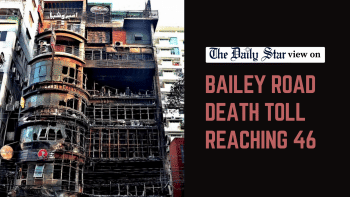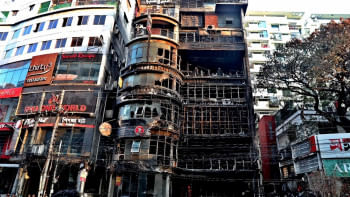What if a school falls to fire hazards next?

In a city where at least 2,603 buildings have been flagged as potential tinderboxes awaiting ignition, it is understandable that some of them would belong to educational institutions among other establishments. Yet, the revelation that the number of "risky" buildings frequented by students would be as high as 720 really hits you in the face. The fire service, according to a report by this daily, revealed this staggering figure last year after inspecting 801 buildings housing schools, colleges and universities for five years. Moreover, it found 64 other buildings to be "highly risky", and only 16 to have satisfactory fire safety measures in place. In other words, the vast majority of educational buildings in Dhaka are at risk of fire.
Overall, during the five-year period, the fire service inspected 1,527 schools, colleges, and universities across the country, and found 1,072 to be "risky" and 336 "highly risky". The criteria used for risk designation include number of staircases available, number of fire extinguishers, staircase width, availability of fire hydrants, water reservoir capacity, etc. Any modern building would not be complete without these basic requirements fulfilled, yet these seem to be a big ask from our building owners. The flurry of drives that have followed since the Bailey Road tragedy on February 29—with the DMP alone reportedly detaining 872 owners and employees from 1,347 risky hotels, restaurants, gas cylinder shops, and chemical warehouses till Tuesday—have once again highlighted the precarious state of fire safety in most buildings in the capital.
The risk for schools and colleges is particularly grave given their high occupancy rates. The devastation that a major fire will likely cause is unthinkable. Visits by our correspondents to some of the buildings marked by the fire service brought to the fore eerie similarities with the Bailey Road mall, with single, narrow staircases, and no fire extinguishers, emergency exits, or fire buckets. Clearly, it's no longer about whether students in those buildings will be at risk, but when, unless retrofitting or re-construction measures are urgently undertaken.
We can no longer afford to ignore these concerns, not when the safety of our children in the very institutions where they are supposed to be protected is compromised. As we have said before, while we appreciate the ongoing safety drives conducted by police, Rajuk and city corporations, what will really serve us in the long term is systemic change pre-empting the very construction/operation of unsafe buildings. For educational institutions, it also means following up on the fire service's findings, and taking drastic action to ensure the safety of our students.


 For all latest news, follow The Daily Star's Google News channel.
For all latest news, follow The Daily Star's Google News channel. 










Comments